Day 1 of a 4-day Spring Tour today. It was a bright day with lots of sunshine in the morning. Although it threatened rain over lunchtime, the dark clouds remained mostly to the south of us and when they eventually moved off the sun came out again. It even felt like spring at times!
Our destination for the morning was Snettisham. A Swallow was singing from the wires beside the road as we parked and got out of the minibus.

As we walked up along the road, we spotted out first Turtle Dove of the morning on the wires above the bushes. We got it in the scope, a good view of its rusty scaled back and barred black and white neck patch, but it dropped before everyone got a look. Not to worry. As we walked in through the bushes, another Turtle Dove was purring ahead of us now. It was hard to find an angle to get a clear view at first, but we followed it was it flew up in display flight, and landed again. We just found a gap in the bushes where we could see it when it flew up again, and landed out of view.
A third Turtle Dove started purring now, in the bushes back along the path, so we walked back and found this one showing very well in the top of one of the hawthorns. We got the scope on this one and watched as it switched between purring and preening. We could still hear the one we had just been trying to follow, plus another which had started up behind us now. What a wonderful sound to stand and listen to, and such a shame it has become such a rare occurrence now.
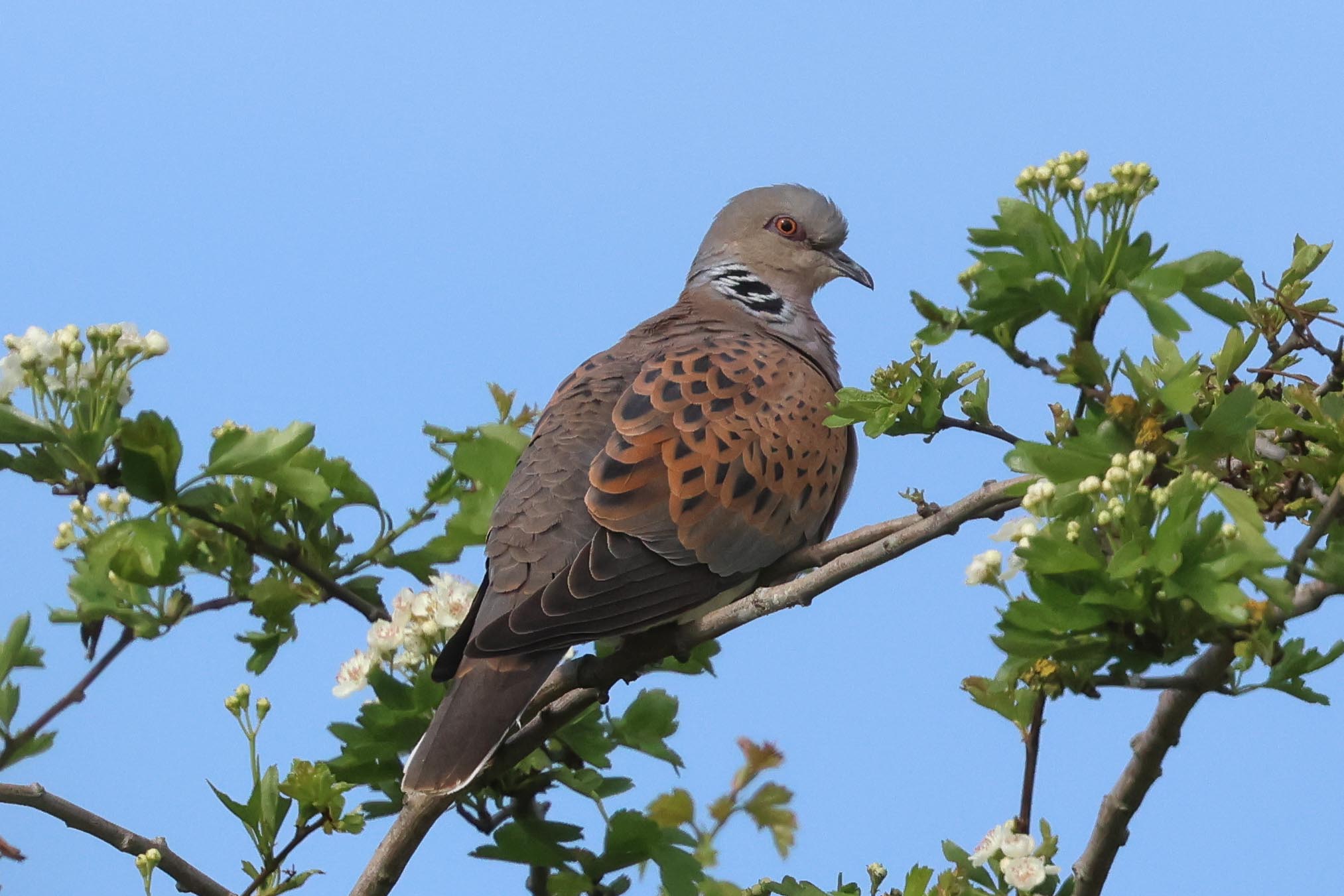
Eventually, the Turtle Dove we were watching flapped up in display flight too, circled round, and landed again out of view. As we carried on through the bushes, two Bullfinches flew out and across the path ahead of us. We came out into the open grassy area, where two Common Whitethroats and a Chiffchaff were singing from the bushes, the latter perching on the top of a tall bare stem right behind us. There was a large flock of Linnets feeding on the ground here and when they spooked and flew round we could see a Greenfinch with them.
We cut across and up onto the outer seawall, as a Stonechat flew past. We scanned the rope cordons up along the beach, but there was no sign of any Ringed Plovers at first, just a pair of Oystercatchers asleep further up. Several Sanderling were feeding along the shore, mostly looking rather dark now, moulting into their very different breeding plumage. Then a couple of Ringed Plovers flew in from behind and landed on the beach right below us, not in the cordons. One started displaying, flying round with exaggerated wingbeats over the edge of the Wash.

Walking on up the seawall, there were several butterflies out in the sunshine now – several Wall Brown chasing round over the marram and a Small Copper briefly feeding on a dandelion. A flock of Oystercatchers flew past over the water, looking like a picture in the sunlight. We looked inland to the north and could see they were being put up off Ken Hill Marshes by a couple of Red Kites circling over. A Meadow Pipit was singing and we looked over to see two on the rope fence of the cordon, which then took off and started fighting over the path ahead of us.
The park here was very badly burnt in a major fire last summer, and we could see all the charred remains of the dead trees ahead of us now. Very few appear to be resprouting, so it will sadly take many years for the site to recover. We cut back down into the middle, where a Reed Warbler was singing by one of the pools and two Sedge Warblers chased round over a patch of brambles which had escaped the fire.
Another Turtle Dove started purring ahead of us, and we watched launch up in display flight and land back down in one the charred and blackened trees. It was sad to see it like this – there were several territories at this end of the park last year, before the fire. A Whimbrel flew past, followed by a Curlew, heading for the Wash. Then surprise of the morning, a Barn Owl appeared, hunting along the base of the inner seawall. It was a bit late in the morning for one to be out, but perhaps it has hungry young to feed somewhere. Interestingly, there was a Barn Owl here last year which was also very active during the day.
We climbed up the bank and onto the top of the inner seawall. A couple of Swifts zoomed back and forth past us low over the bank and a Lapwing was displaying over the marshes beyond. As we walked north, the Barn Owl came back the other way along the bank and out over the marshes past us.

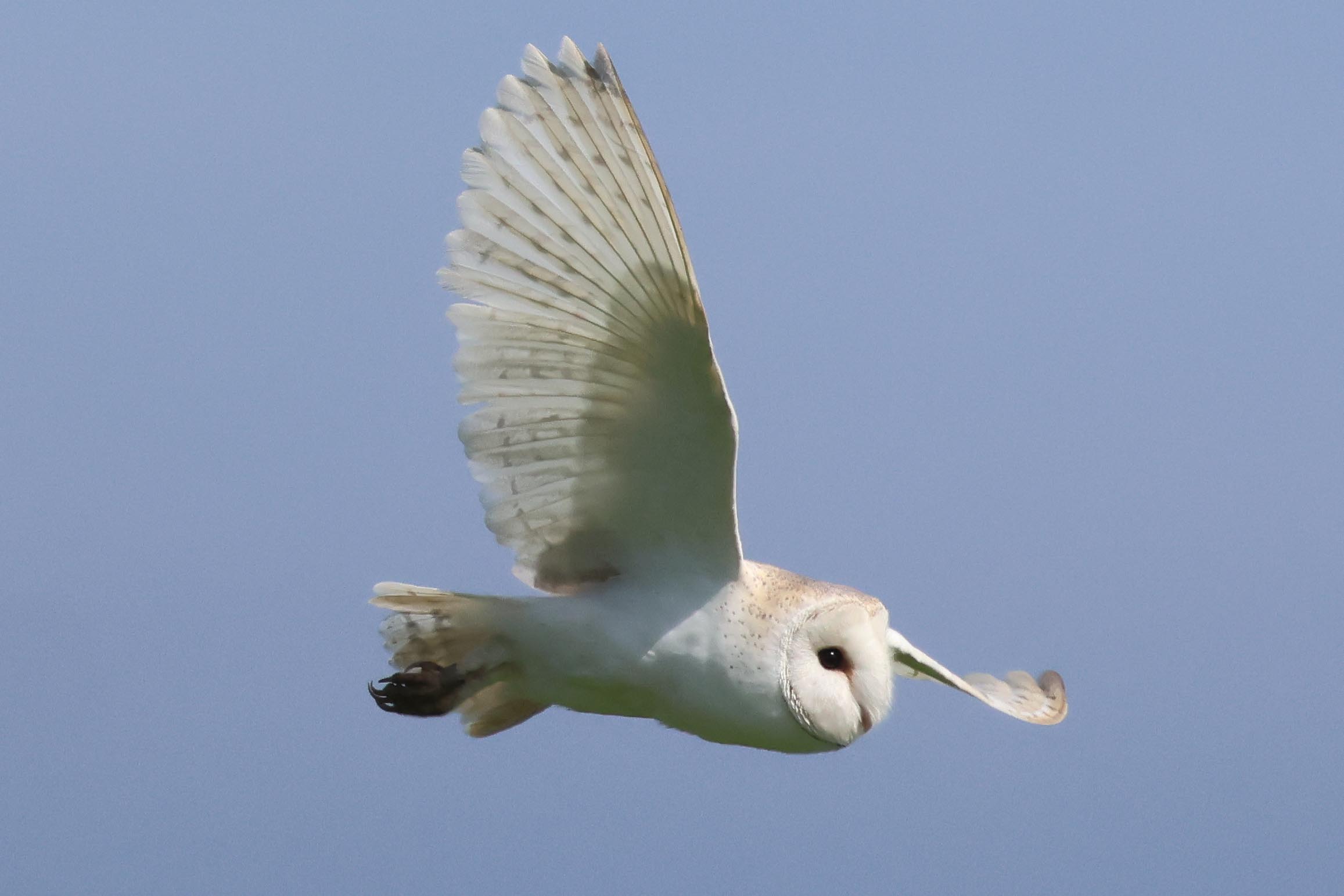
Up past the kissing gate, we could see lots of Oystercatchers roosting on the scrapes, waiting out high tide on the Wash. Everything was put up by a Marsh Harrier circling over, and a large flock of Black-tailed Godwits whirled round too. We could see a smaller wader in with them now, the Long-billed Dowitcher. Having spent most of the winter at Cley, it has now moved here with the godwits. They all landed again, and we got the Long-billed Dowitcher in the scope. It was hard to pick out from the throng at first, but eventually came out on its own where we had better views, although still a lot more distant here then it was at times at Cley.
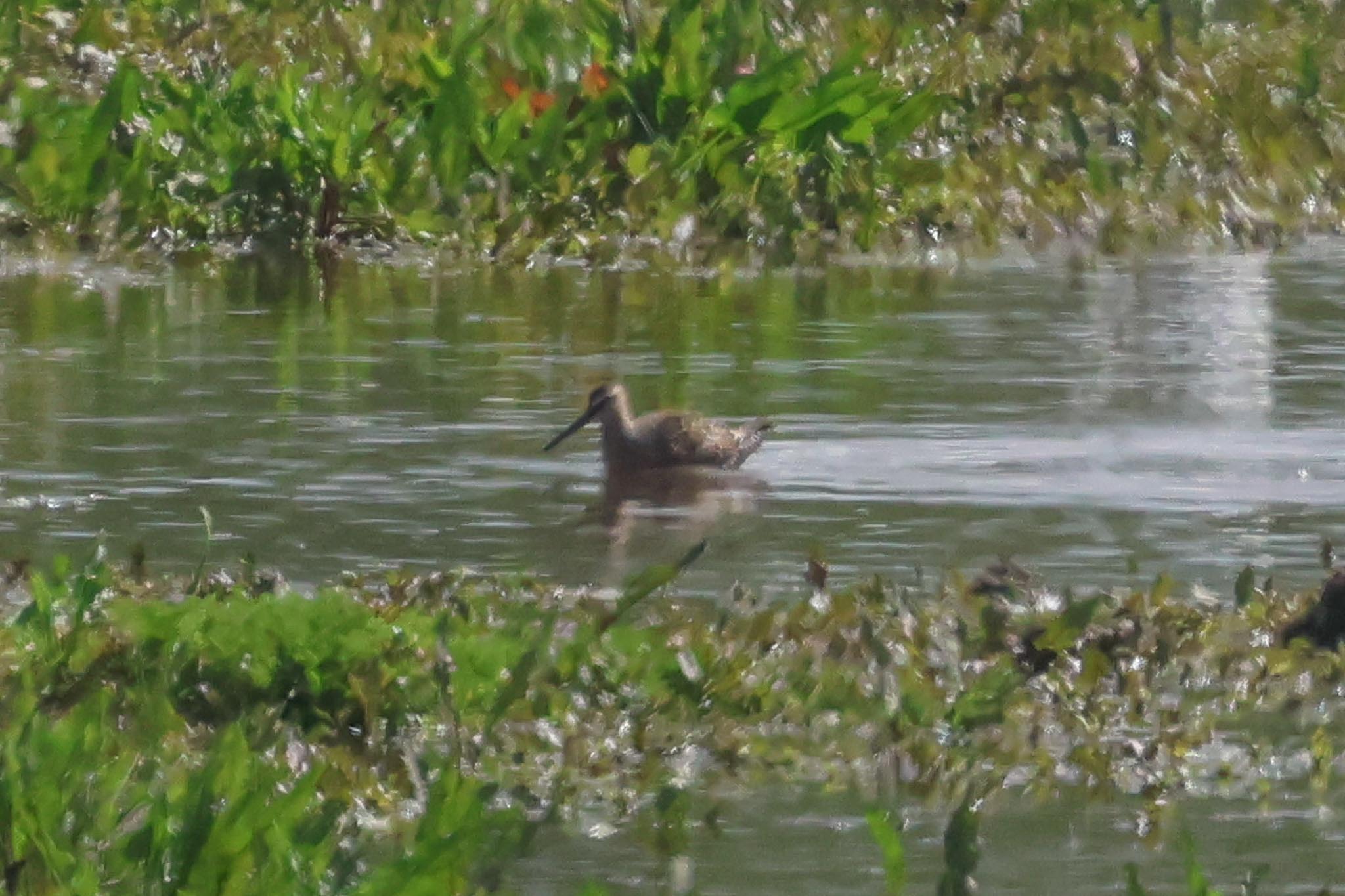
When someone spotted a Barn Owl out over the bank further to the north, we assumed initially it would be the same one, but when we looked over it was clearly a different bird, noticeably browner. It was after 11am now too. Two Yellow Wagtails flew over calling and disappeared on south, but there were not many other migrants moving today. The northerly airflow seems to have put paid to most visible migration at the moment.
The Marsh Harrier flew round repeatedly, occasionally closer to us over the bank and then from time to time drifting back out over the marshes, where it was repeatedly mobbed by Lapwings and flushed all the waders again. The walk back past all the burnt trees was fairly uneventful, although we did stop briefly to watch two Little Grebes swimming across one the pools on the marshes.
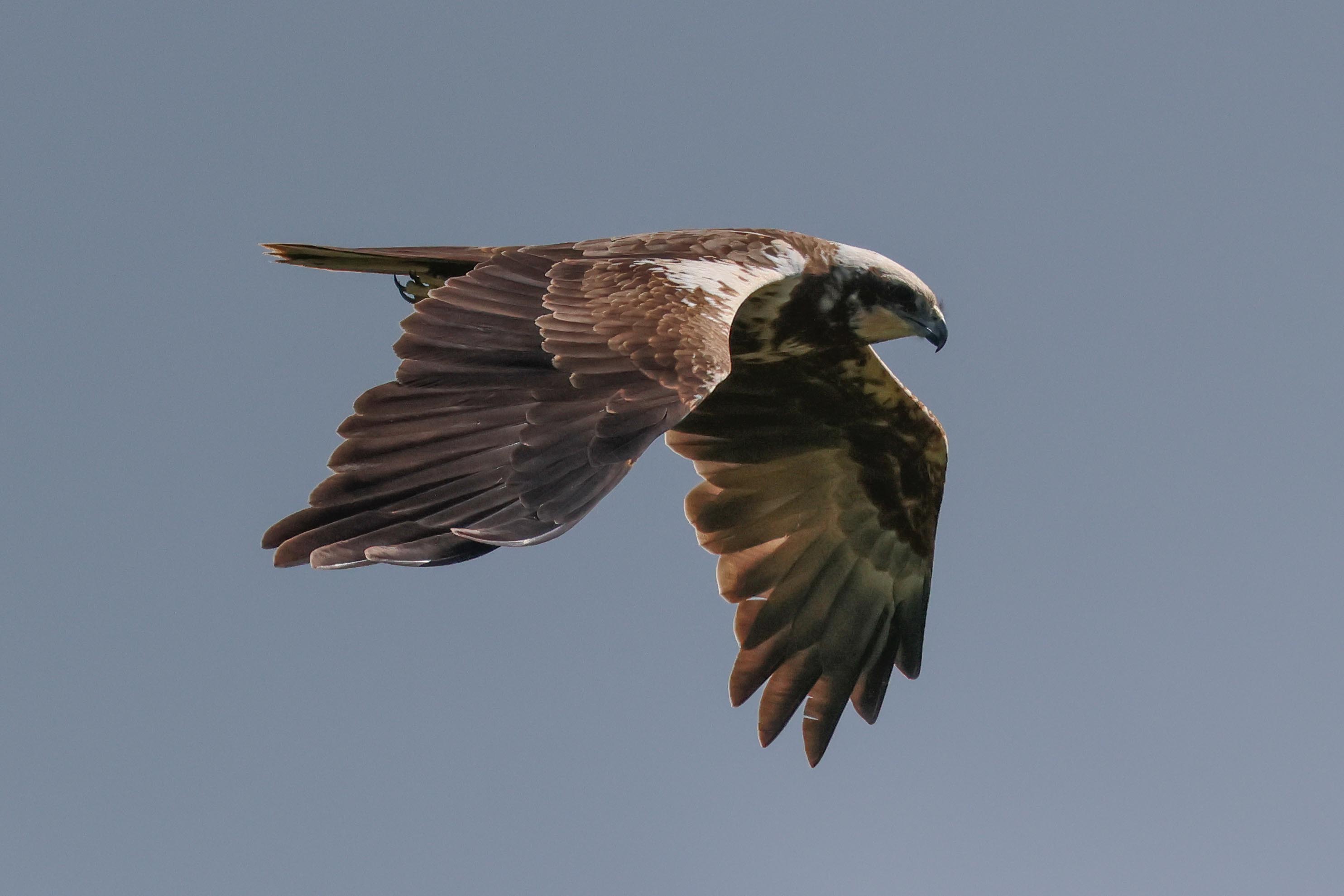
As we drove back towards the main road, we could see dark clouds ahead of us and it looked to be raining inland. We thought we would get round to the north of the weather as we headed round to Titchwell, but it was right on the edge of the clouds here and they were not really moving in the very light winds. It was time for lunch now, so we stopped in the picnic area. There was blue sky and sunshine to the north and west of us, and cloud to the south and east, just enough to produce a couple of spits of rain very intermittently as we ate, although thankfully not enough to require covering up.
After lunch, we headed out onto the reserve. A Great Reed Warbler had been found here during the morning and a small crowd had gathered on the bank overlooking the reedbed. It had been singing on and off, but was quiet now. Speaking to one of the locals there, it seemed like it had been singing every half hour, so we figured another burst of song was due at some point. While we waited, a Marsh Harrier drifted over the reedbed and a Great White Egret flew in behind us, over the path and dropped down into the reeds.
Sure enough, we didn’t have to wait too long before the Great Reed Warbler started singing again. Interesting just to hear, very different from our regular Reed Warbler, a pair of which were flitting in and out of the vegetation with nest material. We could just see the Great Reed Warbler singing from the back of a small sallow close to the bank, and we managed to get it in the scope briefly, before it started moving around.
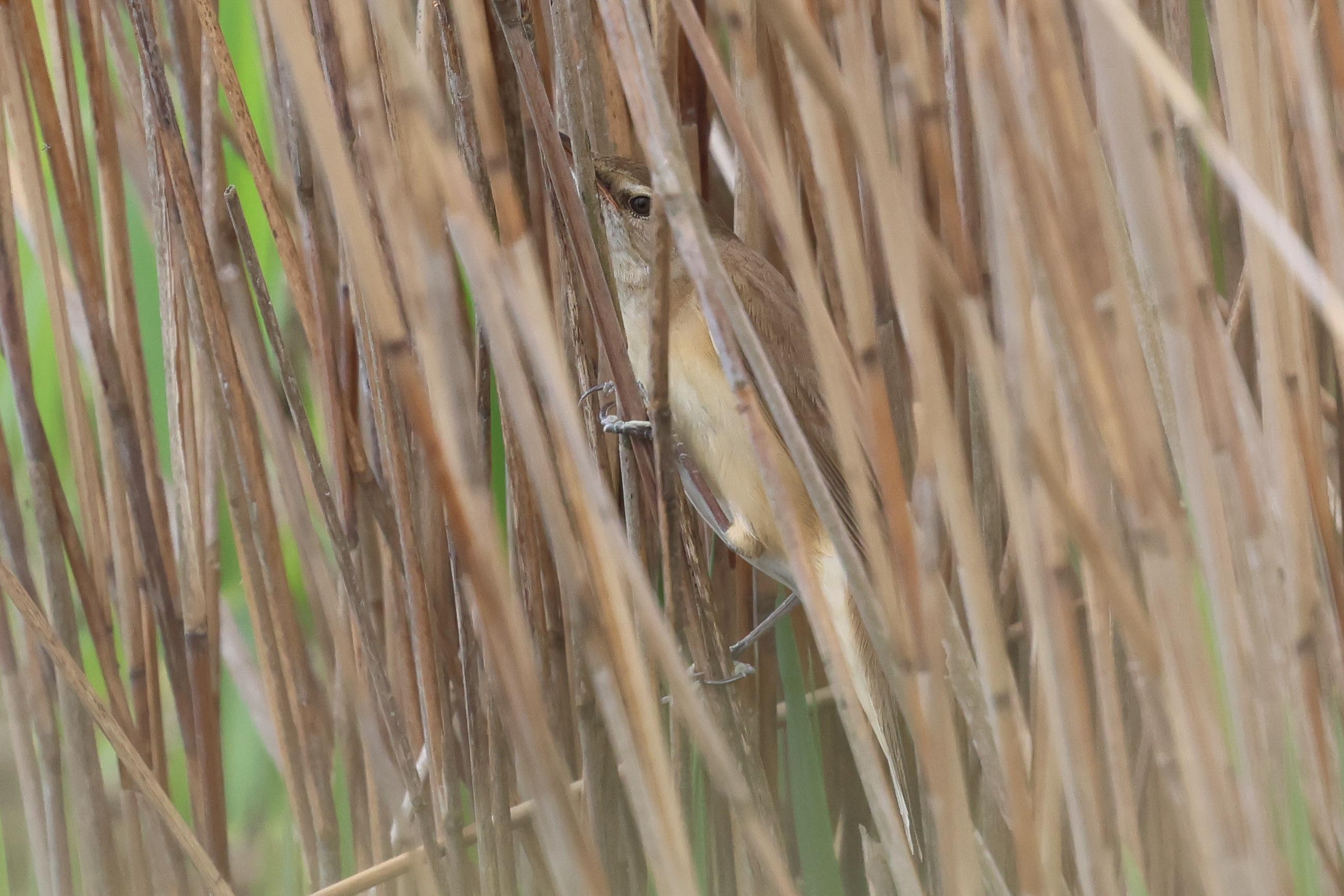
When it stopped singing, the Great Reed Warbler flew out and landed briefly on the edge of the reeds a little further up, before it flew again. It was very active now, flying between the small blocks of reeds around the pools below the bank, and we had a succession of flight views or briefly perched half-obscured in the reeds. Once or twice it appeared in the open for a second or two and thankfully everyone got a look at it.
Just as the Great Reed Warbler came out into the open at one point, a shout from someone alerted to a Bittern which had flown up from the reeds, and was now being mobbed by several Black-headed Gulls. It flew round in front of us trying to decide which way to go, then turned and came right over our heads, disappearing off towards Thornham. We didn’t know which way to look!
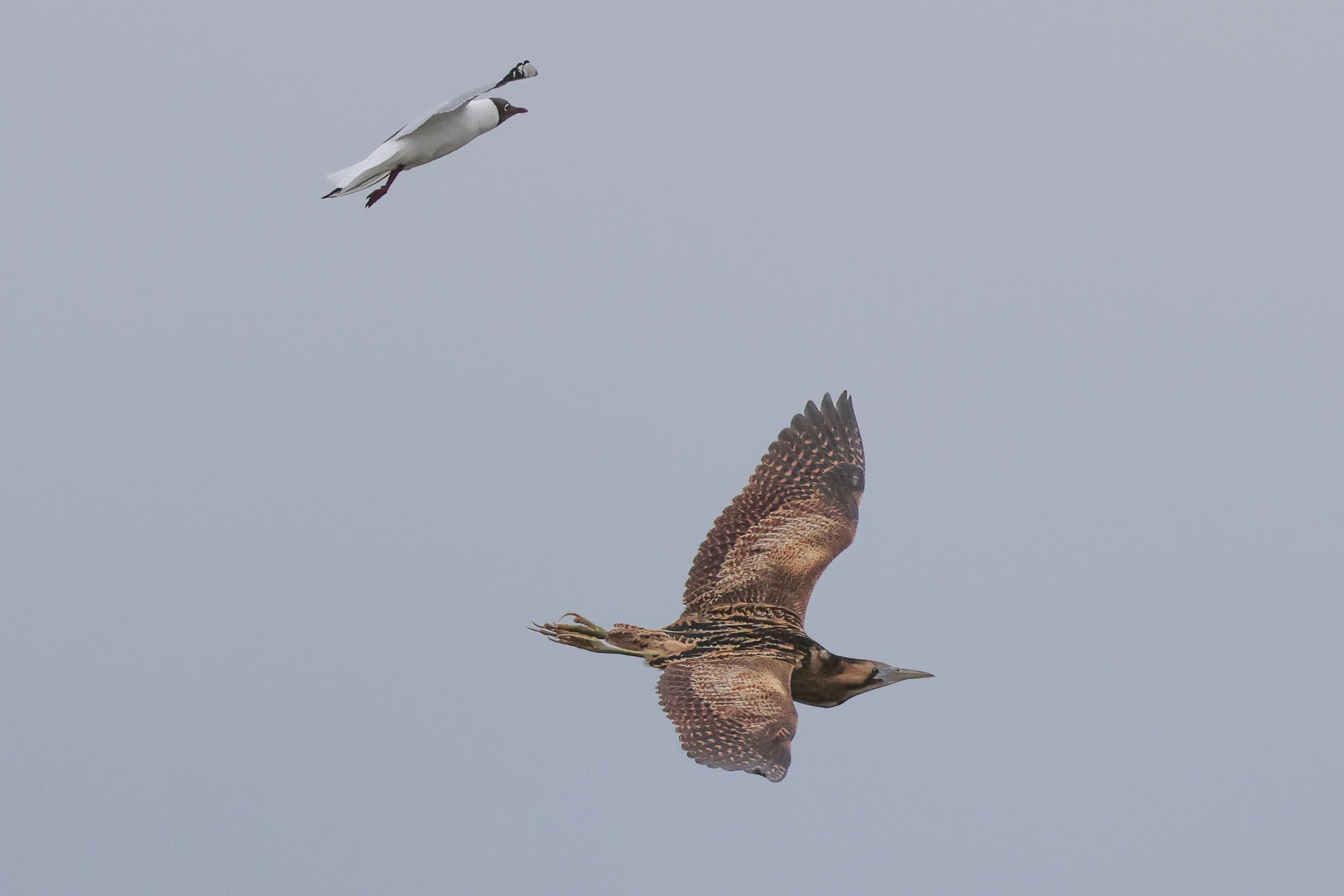

The Great Reed Warbler showed well again briefly, then flew further up and disappeared into the thicker reeds out of view. We decided to move on, and had a look around the pools further up to see if we could find any Bearded Tits. They were not as showy as they have been today – one appeared briefly at the base of the reeds, but then disappeared further in. Two more further back flew up and disappeared off round the edge of the Reedbed Pool.
There were a couple of Sedge Warbler and Reed Warbler, and Reed Bunting in the reeds and a Cetti’s Warbler flew across at one point. A couple of the group saw a Water Vole too. It was still a bit cloudy, but a Four-spotted Chaser dragonfly, presumably freshly emerged, was warming up in the grass by the path.

Up to the Freshmarsh, and we got the scope on a couple of Common Terns on the island in front of Island Hide with the Avocets and Black-headed Gulls. We could see the four Little Gulls hawking out over the water, a smart black-hooded adult and three 1st summers with dark ‘w’ markings across their wings. We got the scope on some distant Mediterranean Gulls on the islands right over the back too, admiring their white eyeliner and bright red bills. Several Common Pochard were preening on the edge of one of the other islands, and a pair of Gadwall were right down at the front, where we could see the complexity of their plumage patterns.

When a Red Kite drifted over, everything went up, and it drifted away pursued by a cloud of Avocets and Black-headed Gulls. Whether that was a sighting mission, a little later it did another circuit, coming in quite high and then dropping steeply to grab a duckling from the water. Again, it was instantly mobbed but this time it flew off quickly with its prey in its talons.
We could see a Spoonbill preening out on the saltmarsh and from the rise in the path by the junction to Parrinder Hide we got it in the scope, It was preening at first, showing its yellow-tipped bill, but then did what Spoonbills like to do best and went to sleep. It was just a brief nap though, as we hadn’t had time to pack up before it took off and flew away towards Thornham Harbour. Several small groups of Brent Geese were feeding out on the saltmarsh too.
We went in to the far section of Parrinder Hide overlooking the Freshmarsh. We were hoping to see the Little Ringed Plovers here, but there was no sign of any at first. A lone Dunlin was on the grassy island, but hiding in a small depression with just its head visible. When it deemed it safe to do so, it came out and started to feed. Two Ringed Plovers were on the edge of the next spit back. A Little Egret appeared right below us and the four Little Gulls landed at one point on the back of the mud in front of the hide.
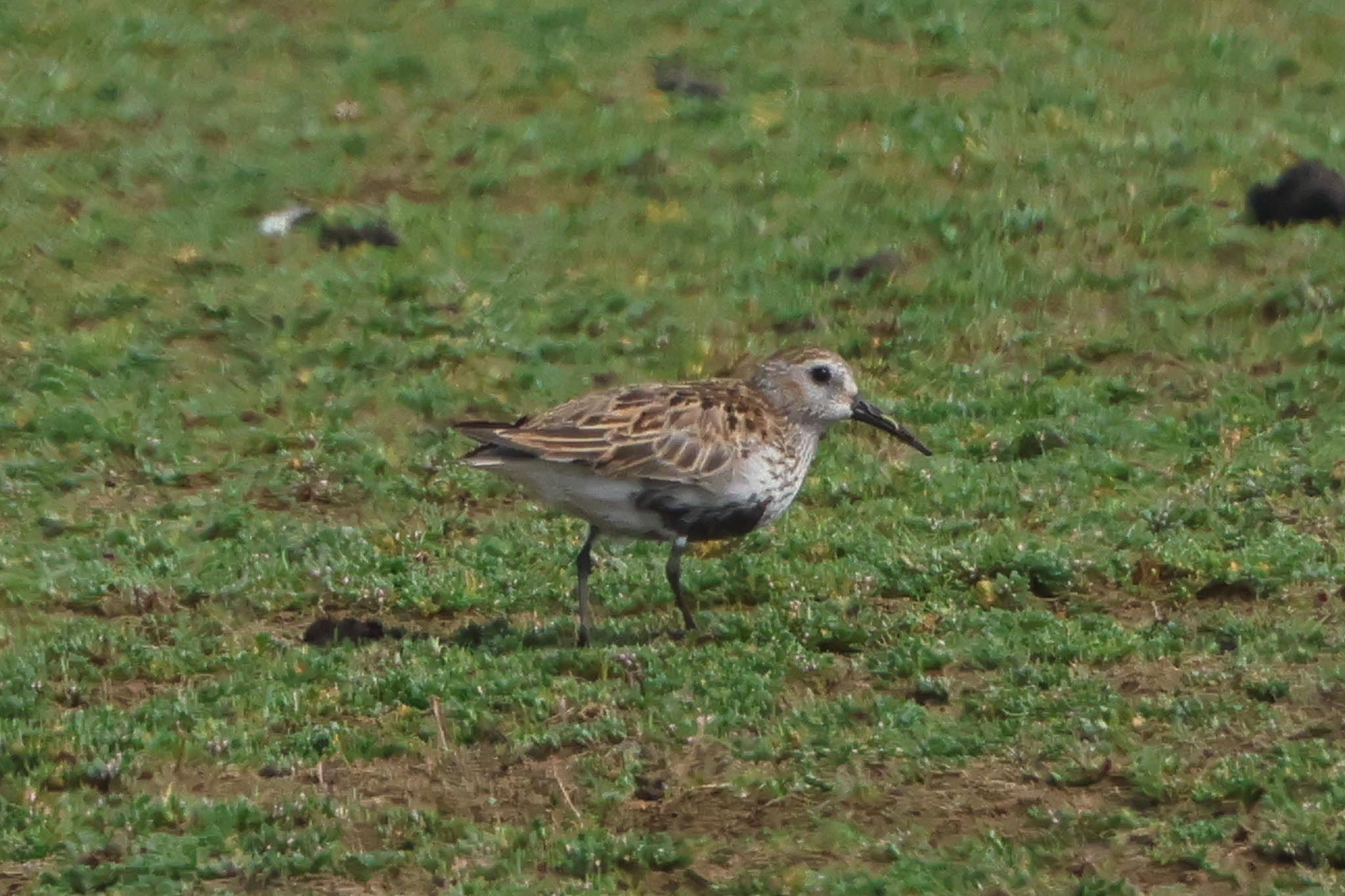
We did eventually find a single Little Ringed Plover from the other section of the hide, feeding along the back edge. We got it in the scope, so we could see its golden eye ring. This is as far as we were going today. On the walk back, we stopped for a quick look but there was no further sign of any Bearded Tits and the Great Reed Warbler had now gone quiet too.
We still had time for one last stop, so we headed inland up to Choseley. The Dotterel have been lingering in the fields here for several days now, and someone had just located one out at the back of the field as we drove up. We got it in the scope, although it was very distant and the sun had come out again and there was a surprising amount of heat haze. A second Dotterel appeared nearby and there was a Wheatear out at the back too, but that disappeared just as we got it in the scope, and both Dotterel then sat down and blended in to the background.
Some other people had arrived hoping to see the Dotterel and thankfully after not too long a wait first the Wheatear resurfaced, and then the two Dotterel. A bonus Yellowhammer flew across the field in front of us.
It was time to head back now. It had been an exciting first day – hopefully more tomorrow.
















